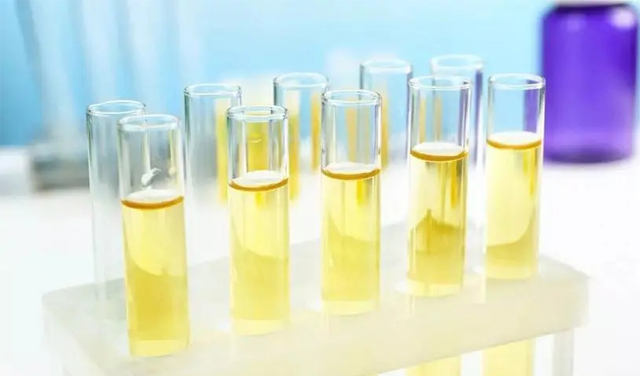
How to assessing population iodine status?
Iodine intake is essential for the production of thyroid hormone. Iodine deficiency remains a public health problem in many regions around the world. Iodine deficiency can present as a spectrum of disorders depending on the degree of severity. Pregnant and lactating women are particularly vulnerable to iodine deficiency disorders because of their increased iodine requirements. Severe maternal iodine deficiency has been associated with cretinism or impaired neurodevelopment in children as well as obstetric complications. Universal salt iodization has been shown to prevent these disorders in severely iodine deficient areas. Recently, observational studies have demonstrated an association between mild-to-moderate iodine deficiency and poorer cognitive out-comes in children.
How to assessing population iodine status?
There are several methods for assessing population iodine status. The most commonly used is measurement of UIC. Because more than 90% of dietary iodine is renally excreted, the UIC reflects recent iodine intake . Individual iodine intake is highly variable from day to day, and even from hour to hour . Therefore, although median urinary iodine concentration thresholds have been estab-lished for populations, UIC is not validated as a biomarker for determining the chronic iodine status of individuals. Spot UIC measurements in populations have been demonstrated to approximate 24-hour urine iodine collections . Median urinary iodine concentrations <100 m g/L are considered consis-tent with iodine deficiency in the general population, and median values < 150 m g/L are consistent with iodine deficiency in populations of pregnant women .

A median UIC of 100 m g/L or more has been defined as sufficient for lactating mothers by the WHO. However, Dold et al. recently reported that UIC may underestimate the iodine status of nursing mothers, and breast milk iodine concentration may be a more accurate indicator of iodine status in this group . They suggested a reference range for breast milk iodine concentrations of 60e465 m g/kg in exclusively breastfeeding women.
Another biomarker for population iodine status is the measurement of thyroglobulin, a protein that is synthesized and secreted by the thyroid gland. Both inadequate and excessive iodine intakes are associated with increases in serum thyroglobulin values. Thyroglobulin can be measured in dried blood spots (DBS) as well as serum . Thyroglobulin values have been noted to reflect alterations in population iodine intakes more rapidly than other methods, such as assessment of goiter rates .Serum thyroglobulin concentrations are known to increase after birth due to elevation in neonatal TSH, and neonatal values are higher in iodine deficient regions. Thyroglobulin reference ranges have been established for populations of school-aged children .

TSH screening in newborns is used in many countries to screen for congenital hypothyroidism, and it may be useful in assessing population iodine status. The neonatal thyroid contains less iodine than thatof adults, and it is also known tohave higher ratesof iodine turnover. When iodine exposureis low,the neonatal thyroid requires increased TSH to maintain thyroid hormone production. Therefore, TSH levels are increased in infants with iodine deficiency in the first days of life [8] e a phenomenon known as transient hyperthyrotropinemia . More than 3% of infants typically have neonatal heelstick TSH values > 5 mIU/L in regions which are iodine deficient . However, neonatal TSH values may be affected by factors unrelated to maternal dietary iodine status, including mode of delivery, time of sampling, maternal or neonatal exposure to iodine-containing antiseptics, and TSH assay methods .Because there is substantial intra-individual variability in the ability of the thyroid to compensate for inadequate iodine intakes, TSH is not a sensitive indicator of iodine status in populations outside the new born setting .
Goiter rates can also be used to assess population iodine nutrition. Historically, goiterwas defined as thyroidal enlargement such that the volume of each thyroid lobe, by palpation, was greater than the terminal phalanx of the examiner's thumbs. However, thyroid palpation has poor sensitivity and specificity . Thyroid ultrasound has become the preferred method to assess for goiter. The WHO has established body surface area-adjusted normal ultrasonographic thyroid volumes for children 6-12 years of age , but such normal ranges have not been established in pregnant women or infants.
Related recommendation
- 1.Skrd participates in 2021CACLP with second-generation products
- 2.CMEF2020,Skrd unveiled second-generation products.
- 3. Silky-Road Medical won the title of "High-tech Enterprise"
- 4. Silky-Road Medical national clinical Laboratory Quality Assessment report in 2020 was 100% approved
- 5.Skrd attended the 2021 CMEF exhibition and presented with Iodine detection products
- 6.Skrd invite you to participate in the 18th China Association of Clinical Laboratory Practice Expo
- 7.Skrd attended the 2020 CACLP exhibition and presented with patented products
- 8.Skrd Medical's products have obtained the CE Conformity Certificate
- 9.Silky-Road Medical's 2019 China Clinical Laboratory Quality Evaluation Report was 100% passed
- 10. Silky-Road Medical's first national clinical Laboratory Quality Assessment report in 2020 was 100% approved
- 11.Pregnant women are the key population for urinary iodine testing
- 12.Pregnancy Prepare for Urinary Iodine Test to Have a Healthy Smart Baby
- 13.The importance of iodine for pregnant women
- 14.How to choose automatic iodine detector?
- 15.The neccessery of urinay iodine detection
- 16.Prevention and treatment Iodine deficiency
- 17.Your hair loss may cause by iodine thyroid function
- 18.Scientific Iodine Supplementation for Smarter Life
- 19.Sliky-road intelligemt automatic urinary iodine
- 20.how to choose blood iodine test or urinary iodine test
